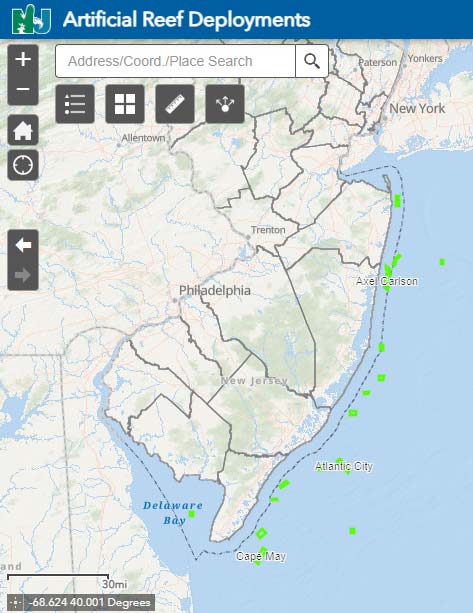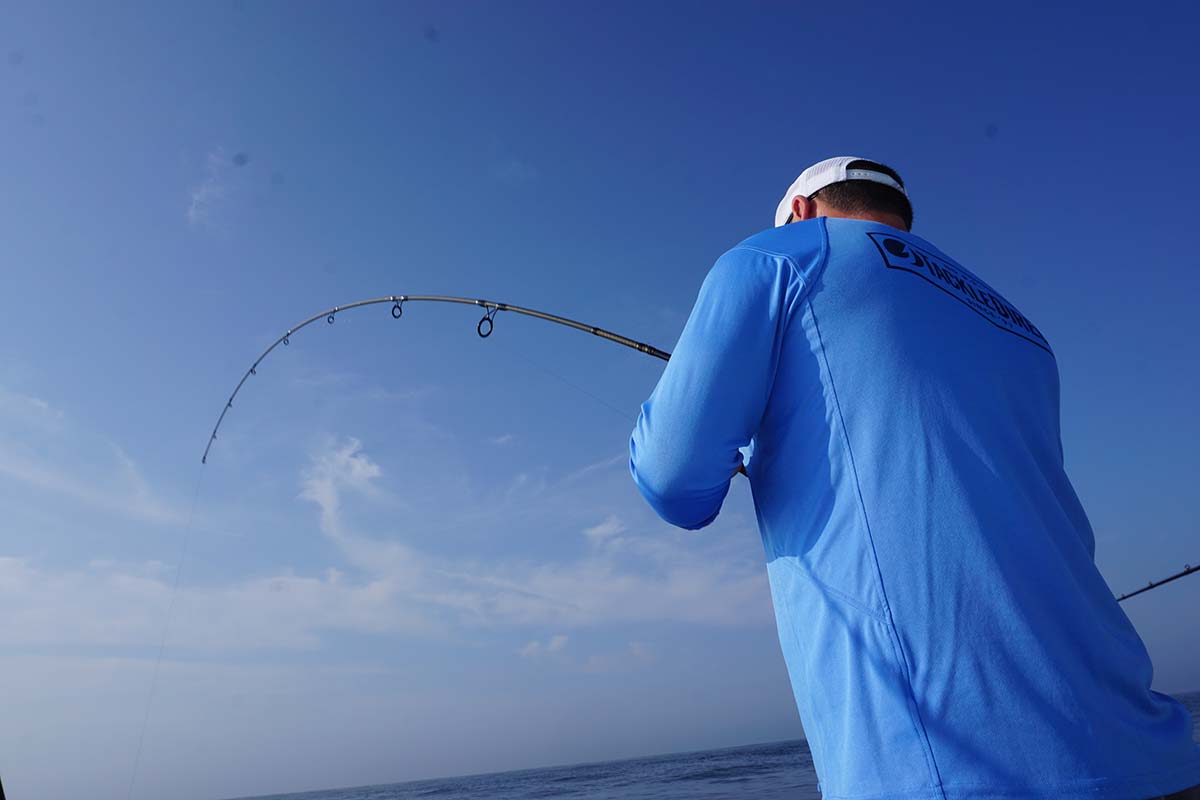
It’s time to get vertical off the Jersey Coast.
As we head into July, the largest fluke have been casually moving with the tides through the local inlets. Headed east, they often follow deepwater trenches until they find an abundance of food in deeper water. Wrecks and reef sites make a great place for the fluke to gather; but if you use the same drift techniques that you used out back in the early days of the summer flounder season, you’re going to hate it.
However, with a couple of tactical modifications you’ll get a clearer picture on how to spend more time catching big fluke, and less time hung on the bottom.
I’ve known a particularly excellent fisherman for close to 30 years. He is a local and highly skilled, even if he is getting a bit on in years; so maybe tired and lazy are beginning to creep in. This friend drifts the reef sites almost the same as he fishes in the back, with a single baited hook rig that’s drifted along the bottom. On the reefs he drifts much heavier weights, but he pretty much drifts aimlessly along, getting hung up and losing rigs way too often. Sure he catches a few fish, but not like we do; our rigging is different, and so is the way we fish. More work with a much greater focus for sure, there is nothing casual about our day on the reef.
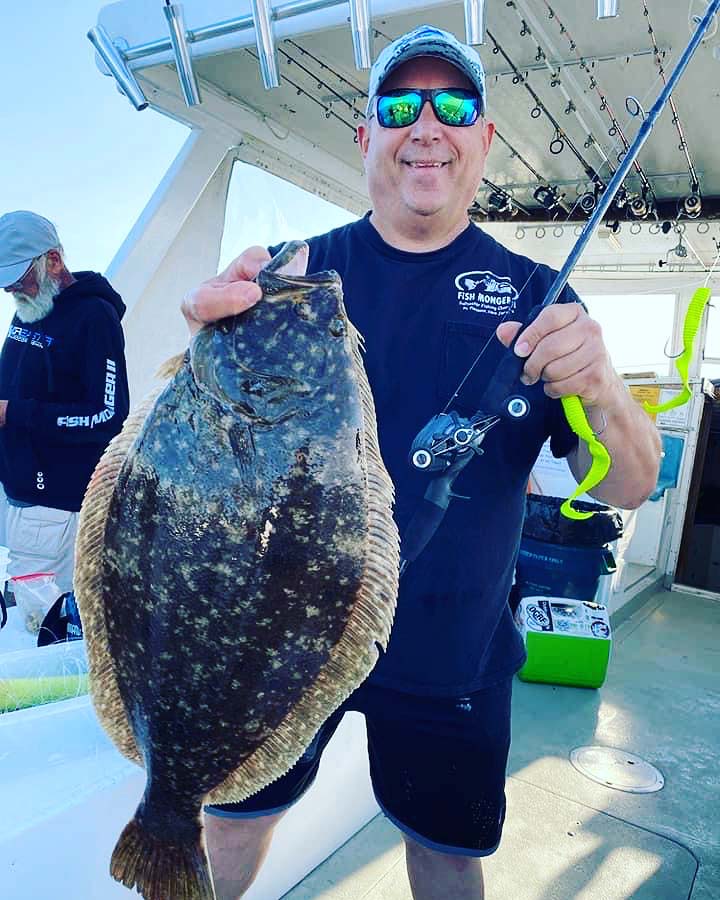
Getting Vertical
Fishing the sticky stuff means a vertical presentation. Flip your rig in the direction that you are drifting so that when your jig hits the bottom it is directly underneath you. Adjust in jig weight as needed by steady lifting and lowering your jig off of the bottom, your rig is hopping over the snaggy bottom. As soon as you start to drag along the bottom is when you will often get hung up and need to break off and retie.
For this type of fishing, I use both spinning and revolving spool gear. A tip that is strong enough to handle each weight, but still have a bit of a delicate tip that will help you not loose many fish. Too stiff of a tip will not absorb the head shakes of the fluke which can cost you a good fish. If the current is light and the drift is slow, I will use a 1- to 3-ounce jighead on my spinning gear. When it’s time to go up to 3 to 6 ounces, I prefer a revolving spool gear which has a torque advantage when retrieving heavier ball jigs. I use 20-pound braid on both of my outfits.
Try to keep rigging simple by using a barrel swivel. Tie on a 4-foot length of 30-pound fluorocarbon leader, with a large double surgeon’s loop at the bottom that you can pass through the eye of your ball jig. Pass the jig through the loop and you’re good to go. About 16 inches up tie a dropper loop where you can lock an Owner 9/0 Ballyhoo hook as your teaser hook. Bait the ball jig and teaser hook with Berkley Gulp 6-inch Grub or Mullet. I like pink shine, glow, or pearl, but be prepared with various color options. You can also try tipping each hook with a thin strip of tuna, salmon, sea robin, or squid.
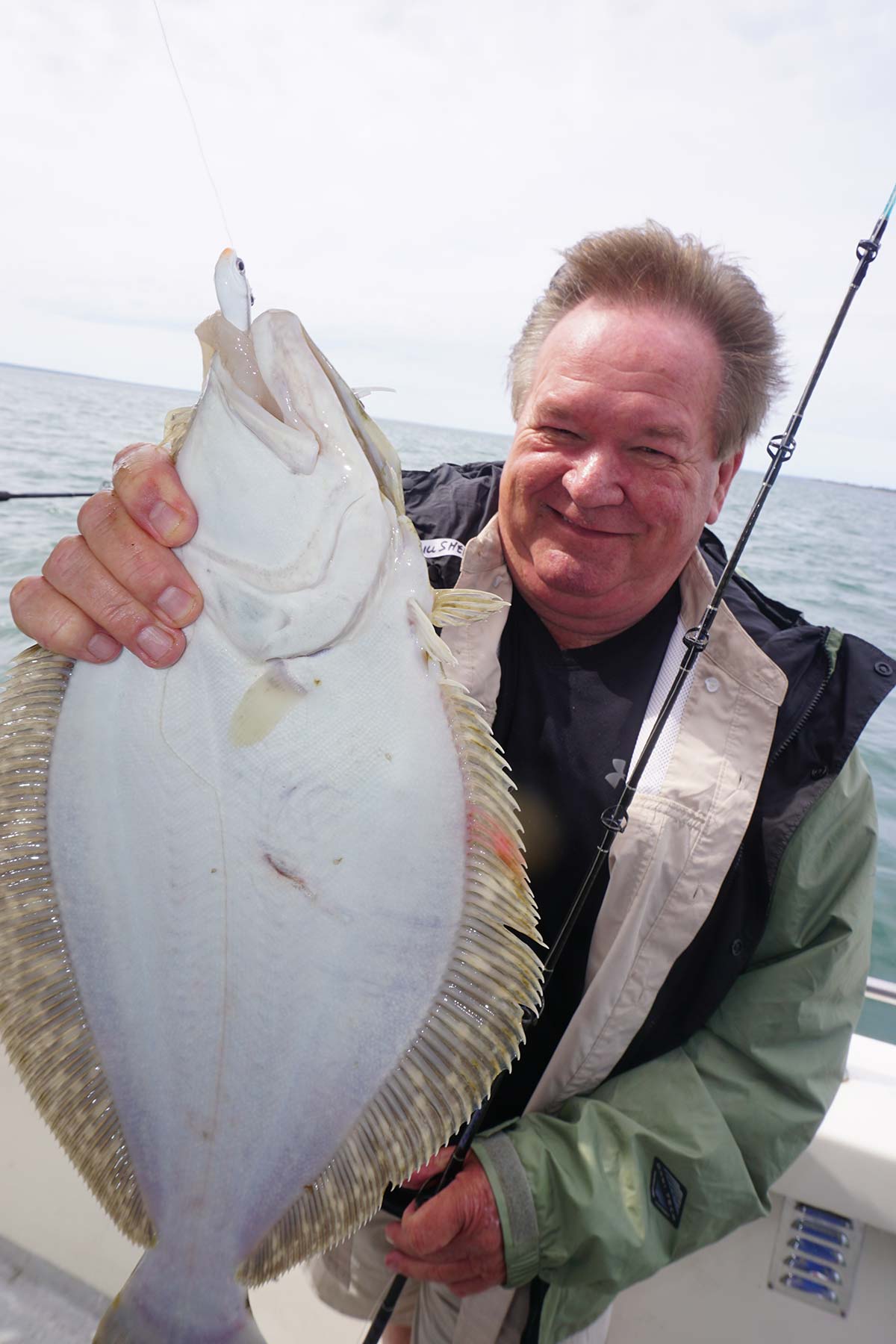
Stick & Move
Certain Charter boat Captains are super skilled in this fishery. Capt. Jerry Postorino runs his Fish Monger II out of Point Pleasant where he heads out of Manasquan Inlet and will position his boat so it drifts alongside several reefs. Capt. Jerry controls the drift of his boat by keeping his vessel’s stern into the seas, bow facing the direction of his drift. He skillfully uses his engines to slow the drift speed, shifting left or right as needed. Keeping the boat’s drift speed down lets his crew work the bottom in a very effective manner.
Rather than drifting large patches of reef, we often work a small piece of bottom, often fishing structure much too small for even the larger charter boats. We’ll hit each individual tank, concrete pile, and small wreck, spending time on every side on the piece. Normally east and west side gets a good look, so we align our drift direction with the area that we want to drift over. If it’s not as good as we hoped, we will often work a bit deeper until we find lager concentrations of good fish.
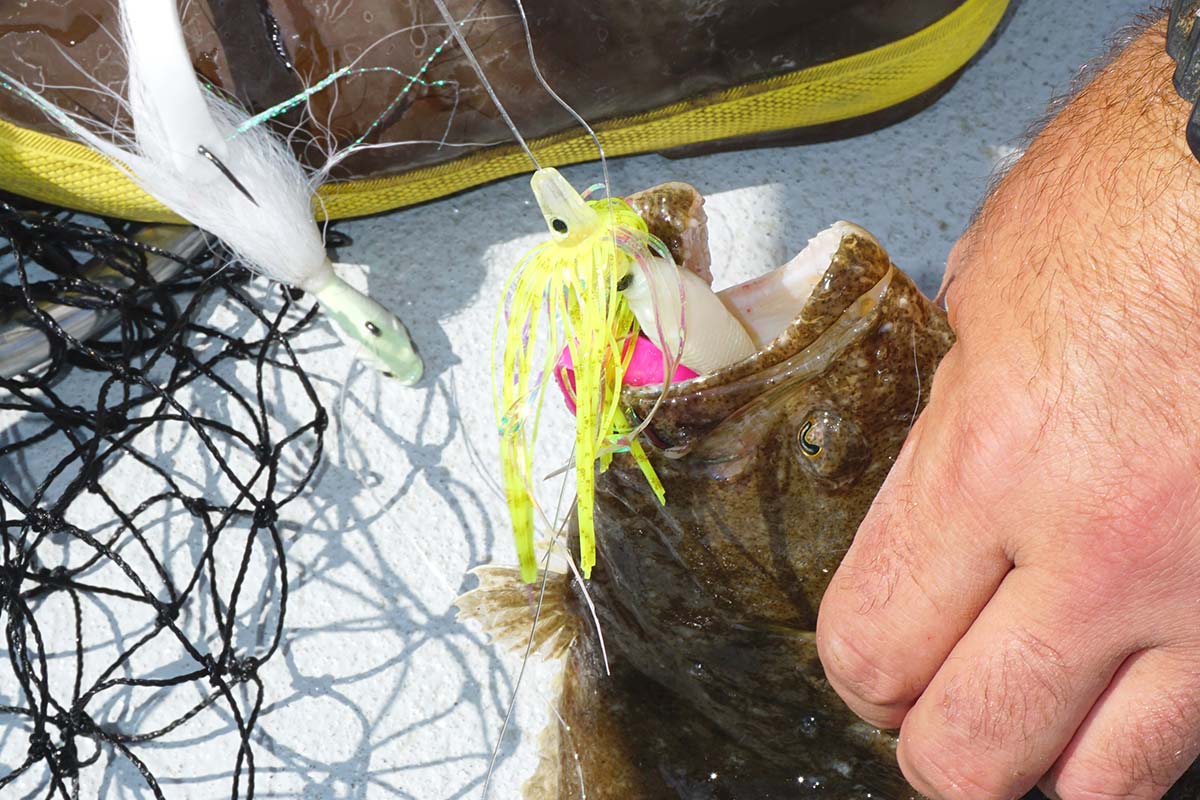
| NJ ARTIFICIAL REEFS |
| Explore New Jersey’s artificial reef complex in more detail by using the New Jersey Division of Fish & Wildlife’s interactive map to find information about deployments; by clicking on symbols on the online chart, you’ll find detailed information including deployment descriptions and detailed LAT/LON numbers.
https://dep.nj.gov/njfw/reefdeployments/
|
When Capt. Jerry finds a good patch of fish, he will hold the boat in position while the crew puts the beat down on the fluke. “Hover craft mode” is harder than it sounds, but not for Postorino; it’s just another tool in his deep box of bottom fishing skills. But what’s really unique is his innate ability to know the conditions in an area and how they affect the fish; it’s simply uncanny.
When we fish the reefs from our center console, again we normally have a dedicated man at the helm. He keeps us in proper position either by power drifting, or by cheating and using our Minn Kota Spot Lock to hold us in position. We sometimes cast maybe 20 feet away from the boat, and when our jig hits the bottom, we hop it back being ready for a fluke bit at any time.
When dropping straight down, a couple of lifts of the jig will sometimes attract fluke from a short distance away. If they see it move, they normally check it out. Using Spot Lock, we’re able to toggle short distances away to cover the area of a reef in a very controlled manner. It really is cheating.
The way you rig your gear will set you up for success. Spend some time and figure out what works best for you. Just remember that a day on the reef is not a chill day; to be successful you’ll need to focus and work hard to keep things on the right track. The fluke will come in flurry as they school up in good spots. When you get a few hits around the boat, get right back on that line and hit the “Hover Mode” button and get to work!
